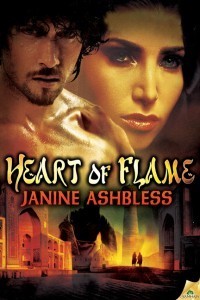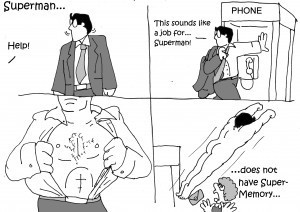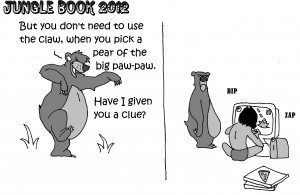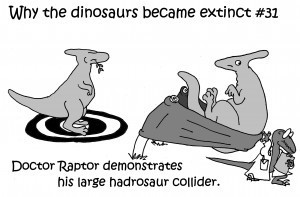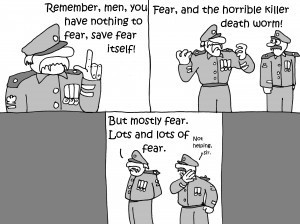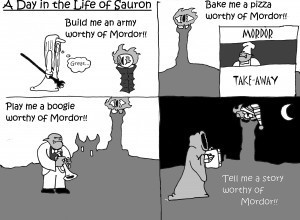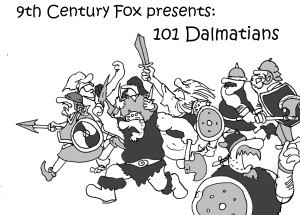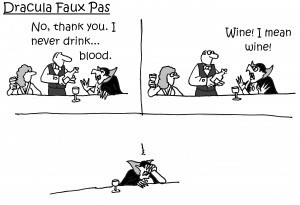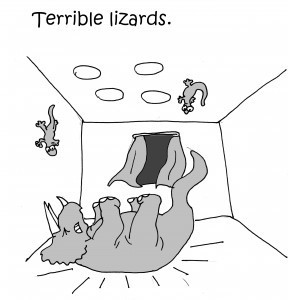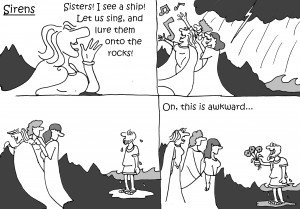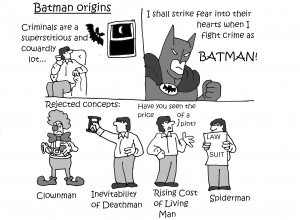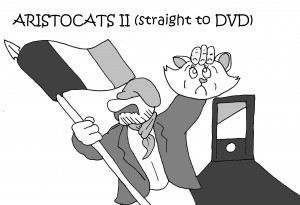Adrian Tchaikovsky's Blog, page 23
January 7, 2012
Interview: Janine Ashbless
Something different today as I talk about someone else's writing for a change and interview author Janine Ashbless. Janine wrote me the short story, The Scent of Tears, written — under another name — for this site, a strong story whose elements (with Janine' s approval) are actually feeding into the main series plot as we speak.
Janine already has a body of work out there, of a somewhat different sort, but shortly she will be bringing out her first Arabian Nights fantasy, Heart of Flame, which was published as an ebook by Samhain on 20th December 2011, and will be out in paperback later this year.
JA: Hi Adrian. Thanks for having me here on your blog!
AT: So, honing my interviewing skills: What's the lowdown on Heart of Flame?
JA: Well, it's a fantasy-romance – you can probably tell that from the cover style, heh. My heroine, Taqla, is a sorceress in 9th century Damascus. When the Amir's beautiful daughter is kidnapped by a djinni, she agrees to help merchant-traveller Rafiq ( a Sinbad type) rescue the girl, because she's fallen in love with him. But she can't tell him that. She can't even let on that she's female – she's in magical disguise. They set off on this quest which ends up becoming more complex and dangerous and crazy as they go on, dragging them into wilder and weirder places – swamps, ancient temples, desert ruins, cities halfway across the world — and getting them into seriously deep trouble with undead emperors and pagan gods and hungry ghouls. This is all before they even tackle the djinni…
AT: This is a departure from your previous writing?
JA: Yes; there's a lot more plot … and a whole lot less sex. My normal genre is erotica. Heart of Flame is a romance, and it's not even a straight romance because there's so much of the magic/monsters/adventure element. So, cross-genre. But the romance is still pretty steamy. If you read the uncensored One Thousand and One Nights, there is an unabashed sexual element there.
AT: The mythic Middle-east is an area I've not seen a good take on in a while, in fantasy fiction. Where are you drawing your setting from?
JA: It's a fantasy version of the real 9th Century Middle East – and let's be honest, it's very much the Thief-of-Baghdad, Golden-Voyage-of-Sinbad Arabian Nights. I'm not an Arabic historian. My starting point was a translation of the traditional 1001 Nights, strongly larded with the Ray Harryhausen-era Hollywood movies I grew up with.
I also used a lot of 19th Century Orientalist art, by people like Jean-Léon Gérôme, as inspiration. These are wonderful, photo-realistic-looking paintings of a Middle East that was only just opening up to the Victorian West. But again, even those depict an exoticised, prurient, filtered version of reality, intended as entertainment as much as education.
I did my historical research too, I hasten to add! Philip Hitti's History of the Arabs was my bible. It's just full of the most wonderful incident and detail. I love it. And I've been lucky enough to visit Syria and Jordan and Egypt. I did call on those experiences.
AT: How does your setting contrast to its historical counterpart?
JA: I've been historically accurate where I can – I use some historic personages like Caliph Al-Ma'mun, and the scholar Ibn Ishaq of the House of Wisdom, who sets my heroes off to find the answer to a riddle — though I did mess with the dates very slightly. The main thing I bore in mind was that I was writing in a mythological setting, so facts were subservient to the Arabian Nights 'look' of the thing. Rafiq fights with a scimitar (which were really a later introduction: Arabic swords at the time were straight). He drinks cardamom-flavoured coffee with fellow merchants (coffee probably hadn't reached Baghdad from Yemen at the time). He plays backgammon and smokes a hubble-bubble pipe (tobacco an obvious anachronism, and the water-pipe was a C16th Indian invention). But honestly, that sort of thing is as integral to the Arabian Nights as genies and magic rings – I couldn't do without them!
AT: What sort of fantastical elements can we expect — a lot of fantasy at the moment is relatively low-magic and gritty — where does Heart of Flame fall on that scale?
JA: Hah! Old-fashioned high-magic fantasy, I'm afraid. My heroes travel on a magical silver horse, otherwise they'd never reach the places they have to go to. Taqla uses her sorcery to get them out of all sorts of trouble. They meet various monsters, including one holy one, that come out of Arabic and Persian legend. They parlay with an animated statue and a dead man made of flies. And then there are several djinn … and that scary scary angel …
AT: What would you give as your sources of inspiration?
JA: My inspiration as a writer has always been Angela Carter. Lyrical but totally unsentimental, she lulls you with her fairy-tale prose and then sticks you with something really cruel. In Heart of Flame you'll also find some sneaky nods to my other favourite writer, H P Lovecraft: there's a copy of The Necronomicon in the House of Wisdom (under its Arabic name, of course) and the ghouls are Lovecraftian as well as Arabic. This may be the first time anyone has ever snuck the Cthulhu Mythos into a romance novel. I would like to think so!
AT: How about film and TV depictions of similar settings. For me, I'd put forward the Hallmark Arabian Nights TV Movie as a surprisingly good shot at the genre.
JA: Yes, I enjoyed that: lush, clever and romantic. The tattooed genie from their Aladdin stayed with me as the mental image of my djinni antagonist. I've also watched Pasolini's artsy 1974 version (lots of boobs), but didn't much like Prince of Persia despite the pretty CGI scenery. The fact that their entire cast was white struck me as … inexcusably cowardly.
My favourite version is still The Thief of Baghdad: given that it was made in 1940, its cheesiness is completely excusable. Oh, what I wouldn't give to have a movie version of Heart of Flame with Ray Harryhausen animated monsters!
AT: A great deal of fantasy settings that include a middle-eastern-ish culture tend towards the "religious fanatic adversary" type, and obvious, in the West, that entire part of the world is a sensitive cultural and political issue. Has that influenced the book, and how did you approach that?
JA: It's impossible not be aware of current events and political attitudes, even when writing a historical fantasy. I did try to be careful. Well, you know me: I'm not naturally the soul of tact and sensitivity…
I mention mosques but don't set any scenes in them. I mention the Qu'ran once, but I don't mention the Prophet. I use the word "God." My heroes aren't pious but they are respectful Muslims. The thing to remember is that the Islam of the 9th Century Abbasid Empire, the "Golden Age of Islam," was not the same as modern fundamentalism. It was urbane, scholarly and tolerant. Jews and Christians of various sects were part of society. People drank wine. And Caliph Al Ma'mun imposed a rationalist, non-literalist theology, heavily influenced by Greek science and philosophy.
So yeah, it's possible that I might offend someone. But you can't stop people taking offence if they want to. My intentions are certainly positive, for what it's worth. Rafiq and Taqla are my heroes, after all.
Okay, I've probably burbled on enough. Thanks, Adrian!
Share this
January 4, 2012
And it's 2012
And nuts to the Mayans (1).
I will shortly have a crack at another post on computer games, this time with the spotlight on role-playing (or lack of same), but currently research is, er, taking up all my time.
For now, just a quick update.
The various projects that I previously mentioned I was contributing to are now all up for grabs, being:
Vivisepulture, edited by Andy Remic and Wayne Simmons, from Anarchy, wherein lurks my story "Pipework".
What a Long, Strange Trip It's Been, edited by Storm Constantine, from Immanion, wherein is my article "Can I Keep Him?" and the story "The Indecipherables" which I've co-written with renowned author Justina Robson.
Horror for the Holidays, edited by Scott David Aniolowski, from Miskatonic River Press, wherein can be found my Lovecraftian opus, "Season of Sacrifice and Resurrection".
Furthermore I have a few dates for the 2012 diary even now:
- I will be at the SFX Weekender on 3–4 February doing I know not what, but I'll be there. The previous two have been fairly phenomenal multi-media events with extremely congenial company, so I'm looking forward to this one.
- I have been asked to guest at this year's Picocon (at, I think, Imperial College, London or thereabouts) on 18th February, at which I will also be doing Stuff.
- I've signed up for Alt Fiction 2012 on 14–15 April — this is not at Derby like the last few, but has migrated to Leicester for the convenience of the denizens thereof, or some such reason.
- I certainly intend to be at Fantasycon 2012, given the fun last time (3)
(1) Leaving aside the New Age types who have rather galloped ahead of the pack in declaring the end of the world, scholarly debate suggests there is no actual evidence that the Mayan calendar portends anything apocalyptic at all (from the wretchedly sparse material available). It seems just as likely that they were all marking their great great… grandchildrens' diaries for a particularly good party (2)
(2) Which in turn suggests that the Mayan culture was built on absurdly extended forward thinking and a careful attention to scheduling, and possibly the Spanish dealt them such a blow just because they failed to call ahead and book their invasion.
(3) Journey back through The Country that Public Transport Forgot notwithstanding.
Share this
December 24, 2011
12 non-festive cartoons
Because it's the season, my gift to you is a dozen cartoons that have absolutely nothing to do with Christmas whatsoever. I make no warranties as to whether they have anything to do with humour, either. Click on each one (hopefully) for a larger image.
Anyway:
Share this
December 22, 2011
Helmess Broiler and Jodry Drillen
Contains some spoilers for book 4 and later.
Brief diversion on the writer's art to look at these two characters, a brace of Beetle-kinden politicians. Unprepossessing stuff, surely.
However, what the two of them, bitter rivals as they are, demonstrate is the ability of characters to get completely out of control. Along with many writers, I've often gone off on one about the plot and characters having a life of their own, and I'm never sure whether people think this is just authorial poseuring or what, so:
If you've read as far as the Scarab Path, you'll remember these two. Jodry is one of Stenwold's allies, and he kicks the plot of Scarab off by prompting the Khanaphir expedition that Che is a member of. Helmess is the man whose thunder he's stealing, an opponent of Stenwold and all round less reputable character. That's the first we hear of either of them.
Except of course that's not true. However, it was the first I wrote of either of them. And, if you've got as far as Sea Watch you'll know that they both become rather important characters thereafter. Their shared achievement, however, is to somehow concoct an Apt-powered time machine and make subsequent appearances before their intended first outing.
I was writing the first draft of Scarab Path (then called Sacred Servants) at around the same time as my agent was helping me get Empire into shape, and one of his suggestions was an early chapter in which Stenwold gets heavy in the Assembly, Churchill stylee, and for that I needed a foil. It could have been anyone, but i had this chap Helmess Broiler kicking about, and so he got the job. The man of suspect loyalties became a more concrete antagonist, and of course, if you've read Sea Watch, you'll know where that all goes to.
Similarly, Jodry Drillen was new-minted for Scarab Path, but then I ran into something of a timing issue in Salute the Dark. Stenwold returns from his jaunt to the Commonweal and is met by Lineo Thadspar, the old Speaker for the Assembly. Except that Salute had a rejigging in which the order of some sections changed, and abruptly Lineo was basically bedridden when Stenwold needed to chew his ear off. Before I could put in a casting call, enter Jodry Drillen, already with his eyes on the Speaker's newly vacant sandals, handling Stenwold like a professional.
It's very likely that without those chance substitutions and additions, neither character would have become sufficiently fleshed-out (literally, in Jodry's case) to become the major players they are in Sea Watch and beyond: twin careers in politics born entirely out of editing necessity.
Share this
December 10, 2011
War in our time
It is with trembling hands that I type: the first draft of book 9, "War Master's Gate" (1), is finished.
I'm not going to lie to you, it's been a rough ride. I'm slick with blood up to the elbows, and my normal protests that the story unfolds of its own momentum, with minimal fiddling from me, are starting to sound like the officer who tries to shed his guilt by claiming he was only obeying orders. There have been a lot of crunch points in the books so far (look at how Salute the Dark turns out) and The Air War is going to have its share, but book 9 has some moments that sent me away from the keyboard for a bit of a lie down until my hands stopped shaking. I've said goodbye to a few friends, over the last handful of months (2).
After all, we're getting towards the end of the final plot arc. These things are only to be expected.
There's a lot of work ahead, obviously — first off I've got to print it off and re-read it on paper, to pick up all those inconsistencies that have crept in, and ensure it's actually as satisfactory as my memory currently claims it is. In the meanwhile, I'm revisiting 8 while I go through the edits on that, which makes an interesting juxtaposition, as book 9 is somewhat of a sequel to 7 and 8 together.
Next stop: Book 10 — "Seal of the Worm", a phrase that Air War will illuminate somewhat. However, I'm hopeful that I'll get some short stories done first so watch this space.
(1) or: "whatever the hell we end up calling it", but I'm quite happy with "War Master's Gate".
(2) This is sounding a bit like JK Rowling's dire portents during the Harry Potter series. Yes, it's true, General Tynan does put Dumbledore on the crossed pikes. It's dramatic necessity.
Share this
November 26, 2011
Mind the Gap
Apologies for the gap in posting, which is entirely because I'm working on the edits for Air War whilst also trying to get the last few chapters of War Master's Gate down, and is not at all to do with buying Skyrim.
Share this
November 13, 2011
Warcraft, Lovecraft and Horrible Things
But not on this site — and not kinden stories. I'm proud to announce some new writing that's turning up here and there in the next few months.
You may recall my story The Dissipation Club that was published in the collection "Dead but Dreaming 2" — I also submitted a story for a similar collection from Miskatonic River Press, "Horror for the Holidays", and it's currently looking as though that's been accepted. The story is "Season of Sacrifice and Resurrection" and is more canonically Lovecraftian, albeit without mentioning any Names. Fun stuff. "Horror for the Holidays" is currently down as "available soon".
I'm also having a story published in an Andy Remic–edited anthology under the title "Vivisepulture" — this will be available as an ebook, and the story is called Pipework, featuring an altogether nastier exploit of my supernatural detective Walther Cohen (star of The Dissipation Club and a few others that have yet to see the light of day.). Other authors in that collection include such august names as Neil Asher, Guy N. Smith, Ian Watson, Ian Whates, Gary McMahon and a number of other serious heavy-hitters from the fantasy/horror genre — including Andy himself. It's likely to be strong stuff.
Finally, and most peculiarly, I'm contributing to a collection of stories and articles that Storm Constantine is putting together on the theme of World of Warcraft, to be entitled "What a Long, Strange Trip It's Been: Wilderness Survival Tips from the World of Warcraft (1)". I'm contributing an article about hunters (and the insects that love them), and also a piece of fiction, The Indecipherables in partnership with Justina Robson in which we mercilessly have a go at a considerable amount of WoW lore and intellectual property.
Finally — a reminder — signing in Oxford Saturday 19th November Waterstones, 12–2, Signing at Thought Bubble, Leeds, 1-2pm Sunday 20th. In between, much scurrying from place to place. Finally Friday 16th December 12–2 is the Leeds Waterstones.
(1) And even though I play the damn game I can't write, read or hear that without thinking of the South Park episode.
Share this
November 11, 2011
Javert in Space!
OK, I lie. But Javert in the future, anyway. Just been to see In Time and it's a very well done piece of proper SF with some involving action sequences and a tight cast of good actors. It's one of those Big Concept pieces of SF (1), and the basic idea (that in the future time is currency — nobody ages, but after 25 if your time account runs dry, you die — cue enormous exploration of rich v poor, Occupy Big Ben etc.) is explored in countless ways throughout the film, to the extent that pretty much everything the director shows you reflects in some way on this idea. It's a very good idea, go see. And Cillian Murphy's cop is totally Javert.
It ties in some ways with a future blog piece I intend to do some time, in which I track my dirty fantasy feet into the august halls of SF to talk about the current utopia/dystopia split in the sort of SF I'm reading, which I think has some interesting patterns. Now I've mentioned these intentions I fully expect to be silenced by fantasy's Big Brother for daring to open my vile elves-and-dragons-writing mouth about it  . Perhaps the Clarke award will send "The Hunter" after me for my temerity…
. Perhaps the Clarke award will send "The Hunter" after me for my temerity…
However, there's SF and there's SF, and what I really have to say in this blog post is directed at the trailer for The Darkest Hour. And what I say to it is, "Really, Darkest Hour trailer, really? Because that's, like, the lamest alien invasion scheme since the Martians forgot to get their jabs, or maybe those other guys from that other film who were allergic to water, and came to one of the few places in the galaxy where it's at." (2)
Now bear in mind I'm working from the trailer only, here, so maybe the film makes sense of it. Many's the trailer that fails to represent the film it's publicising, although seldom does the trailer actually screw it over. So, what you're saying, Darkest Hour trailer, is that the aliens have a three stage plan: 1. Invade, check. 2. Eat all the electricity, check. 3. Kill all life.… er, what now? So, hold on, invisible alien menace, where do you think all that yummy electricity comes from? Have you heard the goose/golden egg saying? Isn't that like someone trying to secure a supply of hamburgers by wiping all cows from the face of the earth? Meh. Go back to your invisible spaceship and think it over. Just sign up with PowerGen or something.
And also — hold on, they eat electricity, but when they're around, they make electric-powered things work, like lightbulbs and car radios and, apparently, trams (2=3). OK, that does make for a really nice sort of horror thing, where you can have lightbulbs going on as the equivalent of T-Rex's ripples in the water, but isn't that like them vomiting up their dinner everywhere they go? What sort of crazy-ass inefficient metabolism do these invisible aliens have, exactly? Yeah, I totally had those human kids, but then I chucked up so hard I made a tram go, and they got away?
(1) Children of Men is in the same sort of category, and one of my favourite films ever. Also see Equilibrium which, while it didn't hit it off with me in the same way, has some really nice little touches exploring the whole "sensation" theme throughout the movie.
(2) I did not actually shout this out in the cinema, but I was thinking it pretty damn hard.
(3) Is this a spoiler? I don't think it's a spoiler if they put it in the trailer.
Share this
November 4, 2011
The Usual Suspects
Thieves are back. Possibly they never went away but were just being sneaky.
They're a staple of fantasy fiction that goes back to its most influential roots (1), and recently there's been a grand resurgence of books specifically showcasing thief leads.
(1) And I'm not qualified to go into the whole mythic archetype businss but, suffice to say, legendary tricksters and thieves show a basic character type that's probably as old as stories themselves.
Putting my RPG hat on for a moment, but let's make the grossly inaccurate simplification of three hero types — strength-based, wits-based and magic-based. Of these the warrior sorts are arguably the most prevalent and the most distinct from the other two. The warrior's first recourse is threat, direct confrontation and violence. That doesn't mean he doesn't have other strings to his enormously overpowered bow, but he meets trouble head on — look at the majority of David Gemmell heroes — or Conan, for example. Conan outwits or outmanoeuvres a lot of opponents, but generally when their particular abilities mean that he can't just stick a sword in their ear.
Magic heroes tend to shade somewhat into, usually, the thief part of the venn diagram. Magical heroes seldom resort to their magic in the first instance, and their magic is also generally less reliable than the warrior's brawn (it has all sorts of limits, or the story would be very short and quite dull). Magic heroes therefore tend to borrow heavily from the thieves in solving problems with their wits (Ged from Earthsea, Kvothe from Name of the Wind (2)) and/or their lore and acquired knowledge (which is where they start to deviate from the thieves who tend to be brick ignorant about most higher things). Some of them also fall back on the inner warrior, with Elric as a prime example — but the key thing about a magic hero is that it's the magic that defines him as a character. Whatever else he has, he is a wizard first and foremost, set apart from the host of muggles who, usually, regard him with suspicion. This archetype works perfectly well even if there is no magic at all — it's the perception of the wizard that makes it (Merlin in Cornwell's Arthurian series is a good one — is he magic, is he not, we just don't know). But I'm basically now writing the wrong blog entry. Thieves, then.
(2) A very thiefy magician.
A thief's first resort is his stealth and/or wits. The tricky, slippery thief often ends up in a fight, but seldom by choice and only when all else fails. There are some obvious and much-loved examples, but I'll fling a couple of names out — Leiber's Gray Mouser (3) from Lankhmar, and Tolkien's Bilbo Baggins. Seriously — OK, his being labelled a 'thief' is some clumsy racial stereotyping from Gandalf that has tarred every diminutive fantasy character ever since (4) but Bilbo is a sneak and trickster born, and he deals with almost all of his problems by outthinking his opponents — trolls, Gollum — he even gets the dirt on Smaug.
(3) Yes, Mouser knows some magic, but it pretty much drops out of the books by the end of the first one.
(4) Yes, even Fly-kinden. But they're tricksy, you see. Can't trust them.
So, who are the new usual suspects? I have four of them to lead into the interview room in just a minute, but it's worth noting that the genre is stepping beyond the stereotypical cutpurse and second story man. Traditionally, thieves steal by the fairly direct means of taking things without consent — whether from rich merchant's houses or cursed temples (5). Where they are a supporting character, usually backing up the warrior, they provide lockpicking, comic relief and local knowledge, and occasionally death with pathos. Where they are the lead, generally, they defy vastly more powerful enemies and walk off with their loot. Finally, most fantasy thieves are urban — even if they leave their home city they are usually back.
(5) Possibly only once.
However: tonight on the couch with me and stealing my wallet are:
- Locke Lamora, from Scott Lynch's The Lies of, well, Locke Lamora;
- Easie Demasco, from David Tallerman's The Giant Thief;
- Drothe, from Douglas Hulick's Among Thieves; and
- Warden, from Daniel Polansky's The Straight Razor Cure.
All of these have the classic thief's arsenal — they get through life by their wits, they resort to violence as a last resort rather than a first, and they defeat their enemies by being smarter, instead of faster or stronger. However, they're all stepping away from the stock fantasy thief as seen in some earlier books, and a thousand D&D campaigns.
The first thing that really strikes me is that none of this new rogue's gallery is actually the traditional fantasy thief. Locke is a con artist gulling the wealthy of their money with fantastically elaborate schemes, Easie is a thief, but far more of a roving rural type — something like Autolycus rather than the Gray Mouser (6) (8), Drothe is a professional informant, and Warden is a drug dealer by current trade. They also interact with the rest of the underworld quite differently — the traditional fantasy thief tends to live in a world where there is a Thieves' Guild (and often just the one weirdly unified organisation — enough so that Pratchett has great fun with the idea in his earlier books) but is usually no friend of it, and tends to be a rogue thief (9), loner (or working with a single partner) and freelancer. Conversely, Locke has his own gang, and it meshes into an overall network of other gangs under a nominal leader, Easie's world has no more of a guild than thieves who know other thieves (or at least we don't see it), Drothe is an integral part of a large and organised gang, which is itself part of a complex and constantly shifting gang picture across his city. Warden is aggressively a freelancer, in a city where most vice is controlled by warring gangs.
(6) That's Autolycus from The Winter's Tale (7), not Xena.
(7) And that's Shakespeare, not Helprin.
(8) Which I am constantly typing "The Grey Mauser" for some reason.
(9) Honestly not sure about the phrase "rogue thief"
Aside from Easie, however, they all maintain the thief's traditional urban haunts, although the cities have moved on from the MGM Middle Ages that a lot of fantasy used to take place in - Lynch and Hulick's cities have a definite rennaisance feel, and Polansky's setting feels like a weird fantasy version of the 20's/30's crime scene, with ethnic gangs and a Great War in the recent past. In fact, as Warden himself is the equivalent of an ex-cop, and his story plays out far more like that of a PI than an actual criminal, there is a very pulp detective feel to the endeavour.
The other thing that caught my attention was the view of magic — and I think this reflects the changing attitude to magic across fantasy writing in general at the moment. Lankhmar was so full of magic you couldn't lob a brick without hitting two gods and a dimension-travelling wizard, but there was more magic in the secondary world in those days, and we have entered an age where the mystical takes more of a back seat to the physical. Easie's world has the fantastic without necessarily having the magical — there's nothing overtly supernatural about the giant of the title for example. Magicians figure prominently in Locke's life, to his detriment, but they have been reduced to money-minded, vindictive hirelings, with obvious parallels between their guild and the organisations of the thieves themselves (save that the thieves are far more congenial company). In The Straight Razor Cure (10) there are some serious wizards, but as in Locke's world, magic does not command, but serves, and the plot includes references to a magician corps that acted as combined special forces/artillery during the war. Among Thieves has a slightly different angle — the world is more overtly magical, with an Empire run by an eternally reincarnating Emperor who's going off his rocker generation by generation, but that sort of magic is for the high-ups — Drothe himself is no magician, but he knows and makes use of practitioners in the same way as he would do any specialist expert. Magic intruding on his world (and it's a major plot point) is something he could live without.
(10) And frankly that is one of the best titles for a book I've seen in a long time.
Finally, there's morality. Everyone knows that fantasy thieves, after all, have hearts of gold, and that their larceny always ends up serving the greater good. But that kind of Dick Van Dyke cheeky chirpy thief (usually a sidekick too) has also gone the way of all stereotypical things, and (again a representation of the current mores of fantasy) we're left with a much more ambiguous tapestry. Locke is perhaps the closest — as a con man, after all, he robs from the rich (because there's no point enacting elaborate confidence tricks on the poor), and he has an intriguing religious angle as well that sets him apart. Easie, on the other hand, spends pretty much the whole book trying desperately not to do the right thing, and his struggle with his own self interest forms the core dynamic of the book. Conversely, as I've noted, although Warden is a drug pusher (and addict) — mostly to the rich and powerful it's true — he is also a man who can't ignore his moral compass — and interestingly he lives in a world where crime matters far more: however gritty his world, the abduction and death of a single child is a matter of public outcry and attention, whilst in many settings it would be lost in the background noise. Hence Warden spends more time playing thief-taker than actual thief.
Perhaps most intriguing, from the morality point of view, is Drothe. We first see our hero having someone brutally tortured for information: he's not a nice man. However, he looks after his own, whether it's the people he lodges with, or his fellow Kin (thieves) — he has an extremely complex hierarchy of loyalties, but they make up a big part of his character and motivations, and in the end he is willing to take great personal risks to defend the Kin as a whole against threats from outside. This makes the relationships between thieves and gangs of thieves (and other organisations, such as the weird warrior order that Drothe's closest friend belongs to), their betrayals, shifting alliances and infighting, the focus of the book, all as seen through Drothe's eyes — at the same time cynical about it and inherently invested in it.
That, frankly, is far too long a post. Enough about thieves.
Share this
October 28, 2011
Films v Games
Thieves later, films now.
Or: not film. This is just something that I've started noticing, and it's hard to ignore. There's a lot of fuss at the moment about computer games eating into the profits of the film industry — just the same fuss, as MovieBob has pointed out in his Studio System set of articles, as there was when TV really got going, for example (1). I kind of heard this from various quarters and didn't pay much attention to it, to be honest. However, recently I've heard ads for some new war film on the radio that turned out to be for, I think, Battlefield 3, and if you travel the tube in London you can't exactly miss that many of the extra large poster spots, that would previously have been taken up by films — even quite obscure films — are now publicising games — and not just one big hit game, but at least four or five different ones. Just now I kicked off an article on the Escapist to be rewarded by a trailer that had me demanding, "Holy crap, did I miss a new fantasy film that's coming out? What on earth is this?" because it was obviously too Nordic to be Immortals or the Clash of the Titans sequel (2). The film? Skyrim, of course.
(1) In fact, historically Hollywood's reaction to an encroaching other medium has been "3D!" and we're currently in the middle of the third rollout of that particular technology.
(2) And, to be fair, I was also saying, WTF horned helmet, because there is no way that any sane man would be seen wearing that.
Share this

